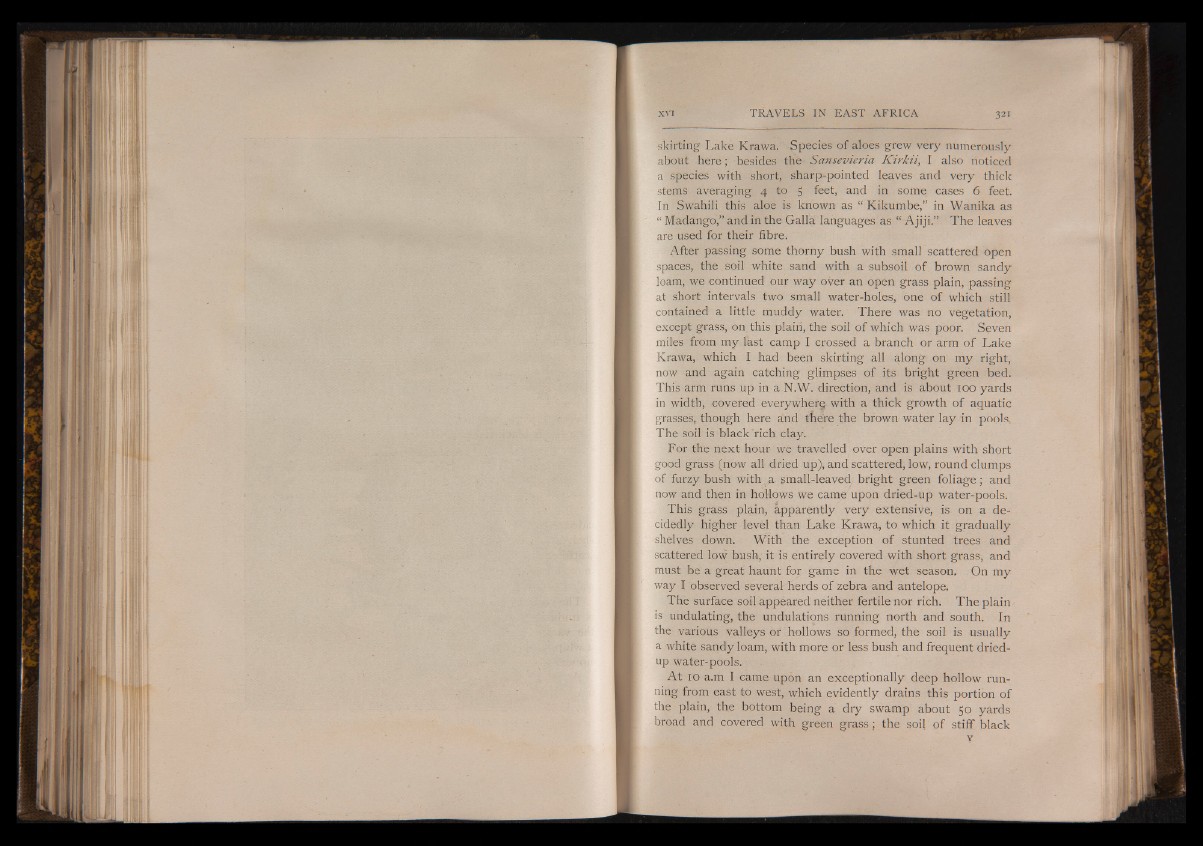
skirting- Lake Krawa. Species of aloes grew very numerously
about here; besides the Sansevieria K irkii, I also noticed
a species with short, sharp-pointed leaves and very thick
stems averaging 4 to 5 feet, and in some cases 6 feet.
In Swahili this aloe is known as “ Kikumbe,” in Wanika as
“ Madango,” and in the Galla languages as “ Ajiji.” The leaves
are used for their fibre.
After passing some thorny bush with small scattered open
spaces, the, soil white sand with a subsoil of brown sandy
loam, we continued our way over an open grass plain, passing
at short intervals two small water-holes, one of which still
contained a little muddy water. There was no vegetation,
except grass, on this plain, the soil of which was poor. Seven
miles from my last camp I crossed a branch or arm of Lake
Krawa, which I had been skirting all along on my right,
now and again catching glimpses of its bright green bed.
This arm runs up in a N.W. direction, and is about 100 yards
in width, covered everywhere with a thick growth of aquatic
grasses, though here and there the brown water lay in pools.
The soil is black "rich clay.
For the next hour we travelled over open plains with short
good grass (now all dried up), and scattered, low, round clumps
of furzy bush with a small-leaved bright green foliage; and
now and then in hollows we came upon dried-up water-pools.
This grass plain, apparently very extensive, is on a decidedly
higher level than Lake Krawa, to which it gradually
shelves down. With the exception of stunted trees and
scattered low bush, it is entirely covered with short grass, and
must be a great haunt for game in the wet season. On my
way I observed several herds of zebra and antelope.
The surface soil appeared neither fertile nor rich. The plain
is undulating, the undulations running north and south. In
the various valleys or hollows so formed, the soil is usually
a white sandy loam, with more or less bush and frequent dried-
up water-pools.
At 10 a.m I came upon an exceptionally deep hollow running
from east to west, which evidently drains this portion of
the plain, the bottom being a dry swamp about 50 yards
broad and covered with green grass; the soil of stiff black
y